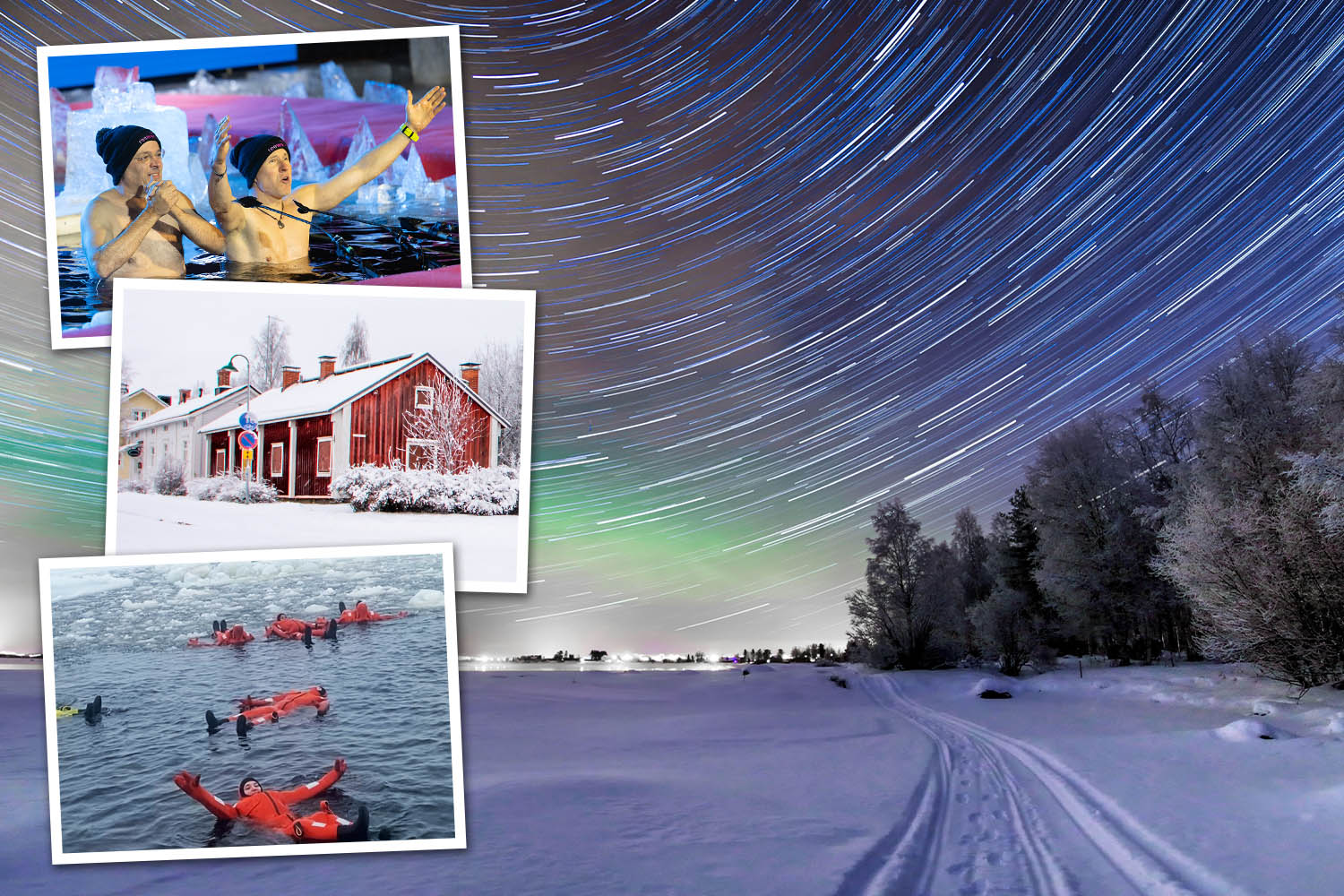I went to European city named an up-and-coming place to travel in 2026 with hotel saunas and air guitar festivals

WHAT do you get if you cross Dragons’ Den with ice swimming? Frozen assets? It was time to find out . . .
I was in Oulu, on the north-west coast of Finland, which last year welcomed the return of televised event, Polar Bear Pitching.
Visitors pay to watch up-and-coming entrepreneurs pitch ideas to a row of cash-fuelled investors, just like the BBC show.
Except these hopefuls must do it from a frozen lake, their pitch lasting as long as they can withstand the freezing waters.
It gave me goosebumps, and not just because of the -20°C chill.
I may not have had any start-up ideas to pitch but that didn’t stop me plunging into the chilling waters while I was here.
The Icebreaker experience is one I’ll never forget.
Dressed in a warm, waterproof bodysuit, I boarded a large boat which slowly made its way across the chilling sea, its hull carving a pathway as it broke through the ice.
We came to a halt and then it was time.
Hurling myself in, I bobbed between huge ice blocks in my floating suit, in awe of my surroundings.
This is an experience that will set you back a fair whack, but it’s absolutely something for the bucket list.
And with so many free things to do in the city, you can save your cash elsewhere.
Oulu is filled with wonderful traditions – so much so it’s been named the European Capital of Culture for 2026.
It’s calmer than Helsinki, with just 215,000 people, but no less fun.
The Frozen People Festival, a drum and bass-filled evening in the Pikisaari district, doesn’t cost a penny.
The event, traditionally held on a frozen lake, will take place on February 28 next year, with DJs, art installations and movies.
Due to climate change, we had to party on firm ground this year, but that didn’t stop me dancing the night away with a local cider in hand as snow fell.
Reindeer stew
Unfortunately, I missed out on the World Air Guitar Championships, a phenomenal spectacle that attracts contestants from all over the globe.
But this free event, held every August in the town’s square, is a fun must-see if you can make it.
With snow on the ground, it seemed only right to celebrate Christmas a little early with a trip to the Arkadia Reindeer Farm where Rudolph and his mates pulled me on a sleigh.
Later, I regressed into a giggling child when feeding them dinner.
Awkwardly, my dinner was a yummy reindeer stew served at the farm’s cosy cabin.
If that doesn’t tickle your fancy, you can head to the Arctic Foodlab, home to a collection of cafes, bakeries and breweries.
I sampled salmon soup and rossypottu, a potato, smoked pork and blood sausage stew.
Both are local delicacies and great for warming you through.
If you’re still not warm enough, pay a visit to the sauna — you’ll find one in most hotels in the city.
The Finnish proudly enter naked, but my English propriety won out, and I wore a swimsuit. I was willing to try one tradition, though – running out into the snow afterwards.
As I pelted into the powdery white, wearing just my cossie and Doc Martens, something stopped me in my tracks.
A flash of green flickered in the sky and several colours danced between the trees above.
The final item on my bucket list had just been ticked off — seeing the Northern Lights.
Even the air’s bitter bite couldn’t distract me from that magical sight.
GO: OULU
GETTING THERE: Finnair flies from Heathrow, Manchester and Edinburgh to Helsinki from £209.
See finnair.com.
STAYING THERE: Rooms at the Original Sokos Hotel Arina start from £142 per night.
See sokoshotels.fi/en.
OUT & ABOUT: The Polar Explorer Icebreaker experience starts at £265pp, see experience365.fi.
Polar Bear Pitching tickets are £25.
See visitfinland.com.




